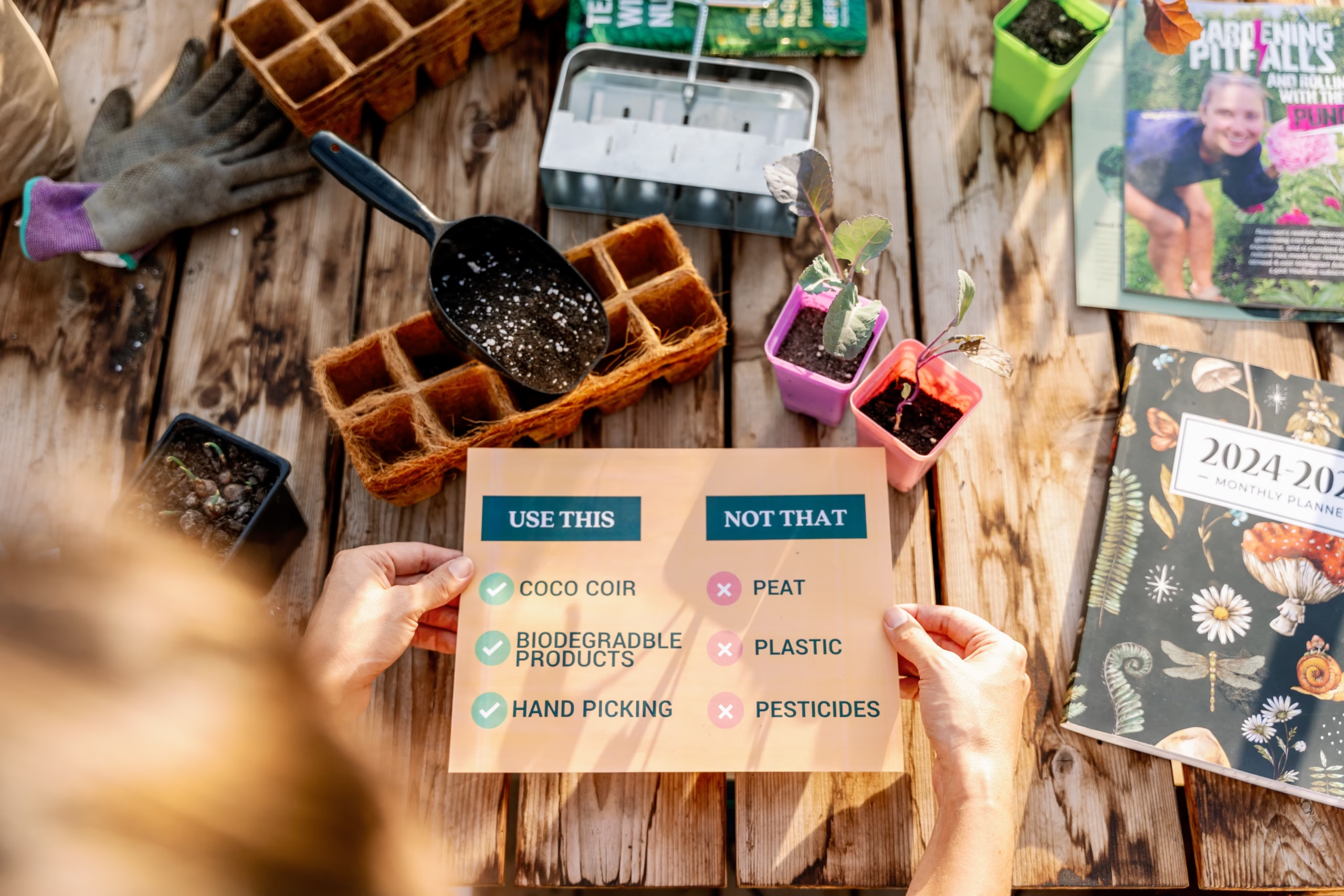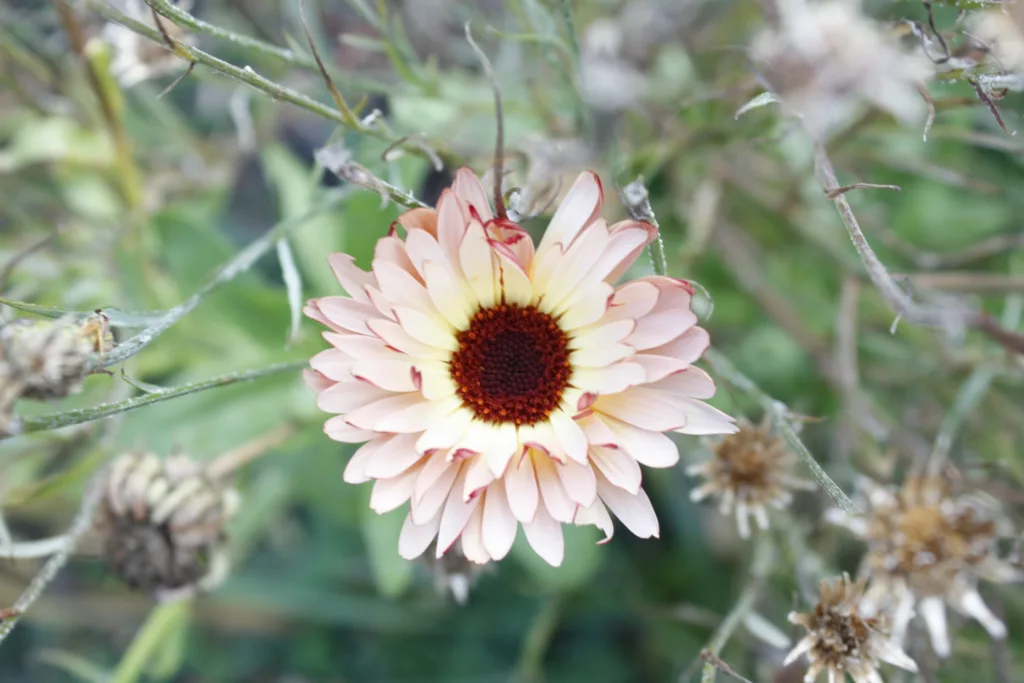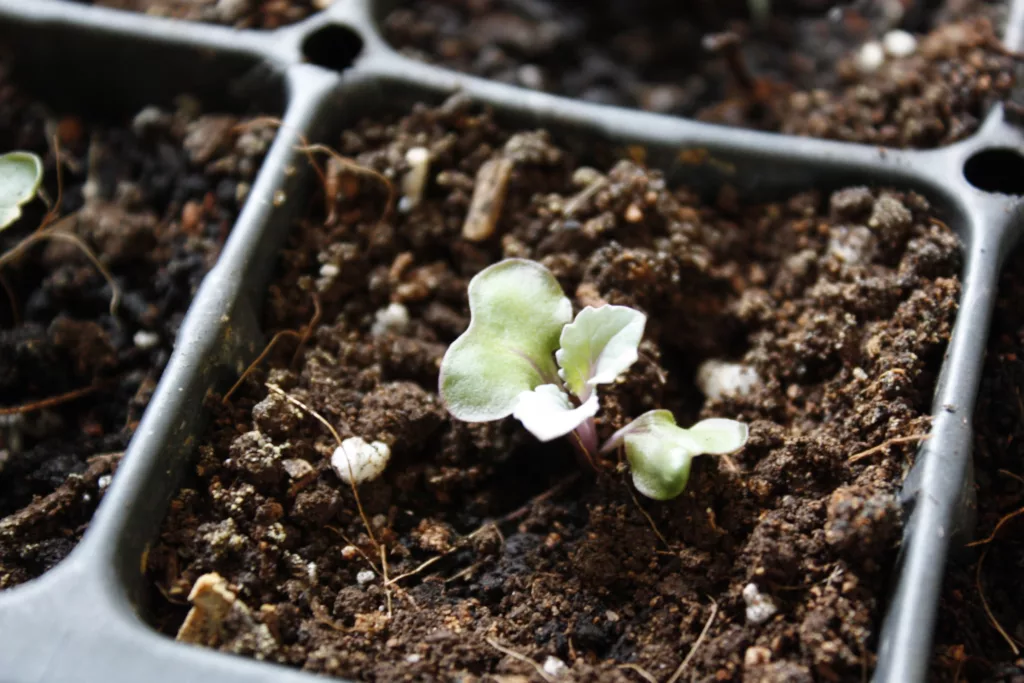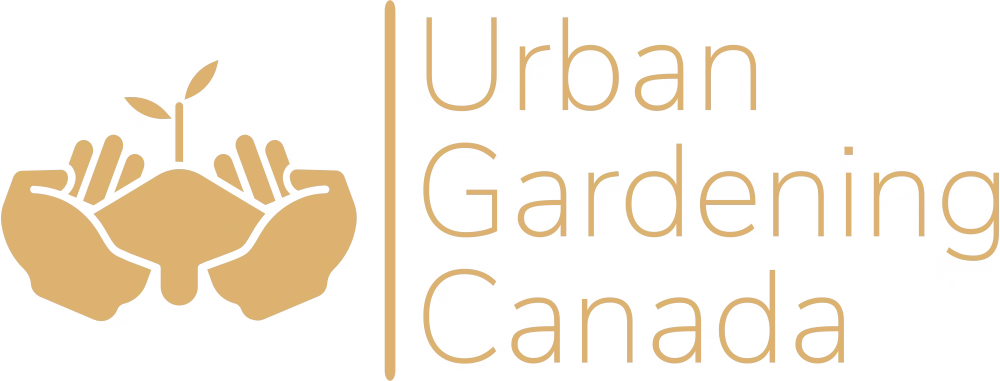

I love growing a fall garden but it can be difficult to plan when the garden fatigue of summer sets in. I learned that I love fall gardens after I grew my first fall garden. I had just moved to Ottawa at the end of August and didn’t get a chance to garden much that summer as I was busy packing. I bought two metal raised gardens as a quick win and desperately wanted to plant a garden. I was put in contact with a local farmer who was willing to spare some of his fall seedlings and there began my first journey into fall gardening. And can I tell you, I LOVED IT.
Growing cool season crops without worrying about a heatwave that will end their season is such a joy! For weeks I was harvesting salad greens and herbs. I was enjoying being able to maintain the garden without the heat, and not having to water much since the fall weather took care of it for me. The off season is such a joy to be gardening in! So now I want to share all of the steps you need to take to enjoy your own fall garden too.
If you want to grow cool season crops that do well in the fall, you’ll need to start some of the seeds in early July! The reason you’ll need to start seeds vs buy seedlings is because the garden centres at big box stores are all closed for the season, or only sell mums. If you can find a local farmer that is willing to sell seedlings to you, you can skip this step.
Slow growing brassica such as cauliflower, broccoli, cabbage, kohlrabi and Brussels sprouts need to be started indoors away from the heat of the sun. Since they need 8-10 weeks before being planted out, starting these seeds in July is the perfect time!

The same plants that do well in the spring garden also do well in the fall. The selection of plants is much larger than you might think it is! When purchasing varieties to grow in the fall garden, the two things you should be looking for include: hardiness to the cold/frost and varieties that have shorter days to maturity (for example, cabbage varieties can have a days to maturity anywhere from 45 to 100 days, so choosing the 45 day variety is best).

Disclosure: this blog is reader supported. Some of these links will earn us a small commission at no additional cost to you.
Let’s start with the list of flowers that grow well in cool weather. If you want a beautiful fall flower garden that lasts into the cool weather, plant annual flowers such as: snapdragons, calendula, sweet peas, nasturtium and pansies. Some perennial flowers will also flower long into the cool weather such as rudbeckia, echinacea, blanket flower and sedum.

The selection of vegetables to grow in your fall garden is definitely larger than you think it is! If you want a bountiful fall vegetable garden that lasts into the cool weather, plant vegetables such as: lettuce, Swiss chard, kale, beets, carrots, radish, peas, cabbage, broccoli, cauliflower, kohlrabi, spinach, garlic, dill and cilantro. That’s over a dozen different vegetables!
One of the most difficult parts of planting a fall garden is finding open garden space. When it’s time to plant out your fall garden, you won’t have much space as the summer garden is still going to be growing. You have a couple of options to choose from in order to make space.
The first is allocating a portion of your garden to quick growing plants that will be ready to harvest and remove by the time the fall garden needs to be planted – this would be plants such as beans, radish or lettuce. This option requires planning in advance to make sure you plant the right crops in the right garden. You also want to make sure this space still receives good light in the fall as the sun moves along the horizon and sits lower in the sky.
The second option is to pull out plants that are done producing. This option will be difficult for you, but it’s necessary. The reality is, by mid September, a lot of summer plants have slowed down and aren’t producing at a capacity they do during the warm season. Being real with yourself and assessing the quality of your plants will show you that a lot of space is actually available.
The wet and cool days of late summer and early fall leaves your summer crops more susceptible to rot and disease. If plants such as peppers or eggplants have flowers or small fruit, the reality is that there isn’t enough time for them to grow into full fruit. It’s best to be truthful with yourself and know it’s time to pull the plants. Doing this gives you more space to plant your fall vegetables. Making the hard decisions in late summer rewards you with fresh vegetables all through September and early October.

Prepping for a fall garden is going to feel awkward for the first few seasons because the timelines are very different than the spring. In late winter and spring, you start plants 4-10 weeks before your last frost date and that is all you have to worry about because the weather picks up from then on.
However, with fall gardening, your garden can be stopped in its tracks by your first frost date and cold weather. When planning when to plant, you need to take into account the amount of weeks the seedling needs to grow inside, then the number of weeks it needs outside before your first frost date.
Are you still with me? I’ll explain some more!
Slow growing brassicas need to be started first. This includes; cabbage, broccoli, cauliflower, kohlrabi and brussel sprouts. In order to give these plants a chance, you’ll want to calculate when to plant your seeds based on your first frost date. You’ll need two numbers to do this. The first is your first frost date, and the second is the days to maturity on what you plan on growing.
For us here in Ottawa zone 5, our average first frost date is October 5. If I am growing something with 45 days to maturity, I need to subtract 45 days from October 5 (August 21), then remove another 4-8 weeks from that which is the time from starting seed to planting out depending on what you’re planting. This means that fall seeds need to be started anywhere from June 21 to July 21.

The faster growing plants need the 4 weeks. This includes lettuce, Swiss chard, kale, spinach, dill and cilantro (although you can direct sow the herbs!). The 8-10 weeks mentioned above are for slower brassica like cabbage, broccoli and cauliflower.
The remaining plants can all be direct sown in mid August. This includes beets, carrots, radish, peas, dill and cilantro.
The final plant to discuss is garlic. Garlic should be planted in late September or early October along with your other spring flower bulbs if you plan to grow those as well.

In order to grow your fall garden successfully, you’ll want to invest in season extenders. This includes cold frames, hoop houses or any other way to protect your plants from potential early frosts. In the photo above you can see an example of cold frames (on the far left) and hoop houses with cover in the main photo. Having cover on your plants will protect them from the first few frosts and allow you to grow later into the fall.
Garden maintenance with your fall garden is very similar to your in-season garden. This includes pruning your plants, cleaning away dead material, deadheading flowers and supporting vining plants such as peas. The only difference is that you’ll need to watch the weather daily as your first frost date approaches to know when to cover your plants overnight.
As the end of fall approaches, stop deadheading your flowers and allow them to go to seed. These seeds will help feed the birds during the winter season. As the leaves fall you can collect them and lay them over your garden beds to use as a mulch over the winter season. Insects will hibernate in the leaves so you’re protecting biodiversity while protecting your garden soil. Finally, as fall and winter wind down and spring returns, we have an article on how to prep your garden for spring which will let you know the next steps once spring arrives again.

Gardening Advice for Short Season Gardeners
Privacy Policy • Terms and Conditions
© 2025 by Urban Gardening Canada